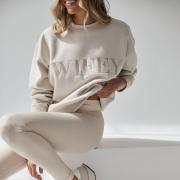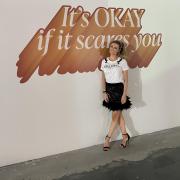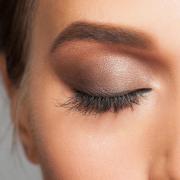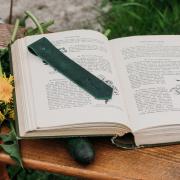Dr Naomi Walker looks through the Cheshire Life archive to see how our adverts and articles have mirrored contemporary society
November 1934, and an article entitled: ‘The Decrees of Fashion', by our Fashion Correspondent, has this advice for Cheshire Life's female readers:
‘Please remember that, though never before have evening gowns been more beautiful, to look your best in them correct deportment is essential. Nothing is worse than to see a woman in a charming gown slouching along with an ungainly gait. Why not try that old school exercise of our grandmothers? Walking up and down the room balancing two or three books on your head. This is the pet exercise of a very lovely mannequin I know, and her carriage is a “thing of beauty.”’
The message typifies the editorial view on what was of interest to its readership: Golf, hunting, sports and motoring articles are aimed at male readers, while the fashion and society pages were targeted exclusively at women.
This sentiment continues into the 1940s in an article headlined, ‘The Way to Victory: Brighter Fashions’ by Gertrude L. Coulam, who writes: ‘No woman desires the expense of a completely new wardrobe, however much she may feel it essential, and yet it is every woman’s duty to be well dressed.’ The implication being that while the menfolk were away fighting, their women needed to concentrate on looking good for their return.

Little has changed by the 1950s with fashion articles still focused on women’s clothes. A ‘Black Mark’ section is added to the fashion column, which highlights the clothing faux-pas of that month. In an article from January 1950 entitled ‘Skirting the Problem’ by Brenda Taylor, the mark is awarded ‘to the lady who wore a long-haired fur cape with equally bushy fur gloves, and contrived to look both over-heated and top-heavy’. The Black Mark in the November 1950 edition goes to ‘the spectator at a fashion show who gave her suspender belt a hitch when she thought no one was looking. Somebody was.’

A Shaws furniture advert from 1960 displays a photograph of a young couple called Jean and Peter, with Jean saying: ‘Shaws have furnishings for every taste and fancy on their seven floors of showrooms. Even though we know Peter is going to be a big shot one day, we have to plan very hard on his present salary.

So, at the dawn of the era that gave birth to the women's liberation movement, in Cheshire Life, running a home is still most definitely a wife's responsibility, while running a car is a man's job, as far as advertising is concerned. A 1960 advert from Riley Motors Ltd has the slogan: ‘For the man who really cares... Are you three men in one – part business man, part family man and with a dash of the debonair sportsman?’ Manhood, it seemed, enabled you to be many things, while a woman could be only one person – the housewife.
Esse Cookers, in adverts of the same time, are marketed as being ‘designed for the modern housewife', while Churtons Blended Scotch Whisky is referred to as ‘The Chairman’s Choice’.

In 1971, Greenwood’s Secretarial College in Manchester advises readers to: ‘Prepare yourself for the age of equality’ but it isn’t until a decade later that content begins to acknowledge things are starting to be more equal. Wella hair adverts target ‘the woman of today’ who are: ‘More adventurous, more confident, more successful in her own right. She’s aware of change. She expects to be able to change – the shape, the colour, the style of her hair to suit her mood. She’s an individual.’

Another decade on and the 1990s see a further shift in the focus of the magazine's view of its audience. Rather than just selling to men in sports, the ‘Sporting Lady’ is now marketed by Widney Sports.
To the year 2000 and a new millennium – with a new breed of working women and girls about town with independent incomes. The supplement Manchester Life, which accompanied the magazine in July/August of that year, predicts that in the first decade of the 2000s: ‘Lifestyles will be radically split along gender lines with women thriving and men pining,' and that: 'The single woman in the city is as far removed from the spinster/old maid insults as you can get. She’s smart, sexy, sassy and needs a man like a fish needs a bicycle. Every night women are out on the town with friends putting the world to rights and discussing relationship quandaries. No stone is left unturned, no sexual adventure too risqué and no male inadequacy out of bounds.’
The paradigm shift in women's roles across the 90 years since Cheshire Life was first published is writ large in the magazine as it passes from the 1930s to the 2020s, and with gender fluidity, the boundaries are being broken down further.
In the wider world, though, those Real Housewives of Cheshire still celebrate stereotypical gender roles. So while things have moved on from the decades when a woman's biggest achievement in life was being a housewife and black marks were awarded to those committing fashion faux pas, there is still some way to go in life in general.
University lecturer and author Dr Naomi Walker has written widely on the subject of forgotten and neglected women authors. She recently co-edited the collection, A Space of Their Own: Women, Writing and Place 1850-1950, published by Routledge.



























